When we review motorcycles, whether it’s me here on RSF.com or our team over at RevZilla’s Common Tread, we are inevitably reviewing new motorcycles, and comparing them to other similarly priced new bikes. That’s a big part of how we judge them: How do they stack up against the competition?
Real-world decisions have more moving parts, however. A rider may be comparing a more basic new motorcycle with a used one that’s larger, more capable or has more features but costs the same. The potential comparisons are almost endless, which is why we don’t get into them in reviews of new motorcycles.
A new twist on this decision-making process has been created by new motorcycles from China now being sold in the U.S. market. If you’re looking for an inexpensive motorcycle, or if you’re a first-time buyer, you may find yourself choosing between two bikes that are about the same price and offer about the same performance and features, but one is new and made in China while the other is a used bike from one of the big four Japanese brands.
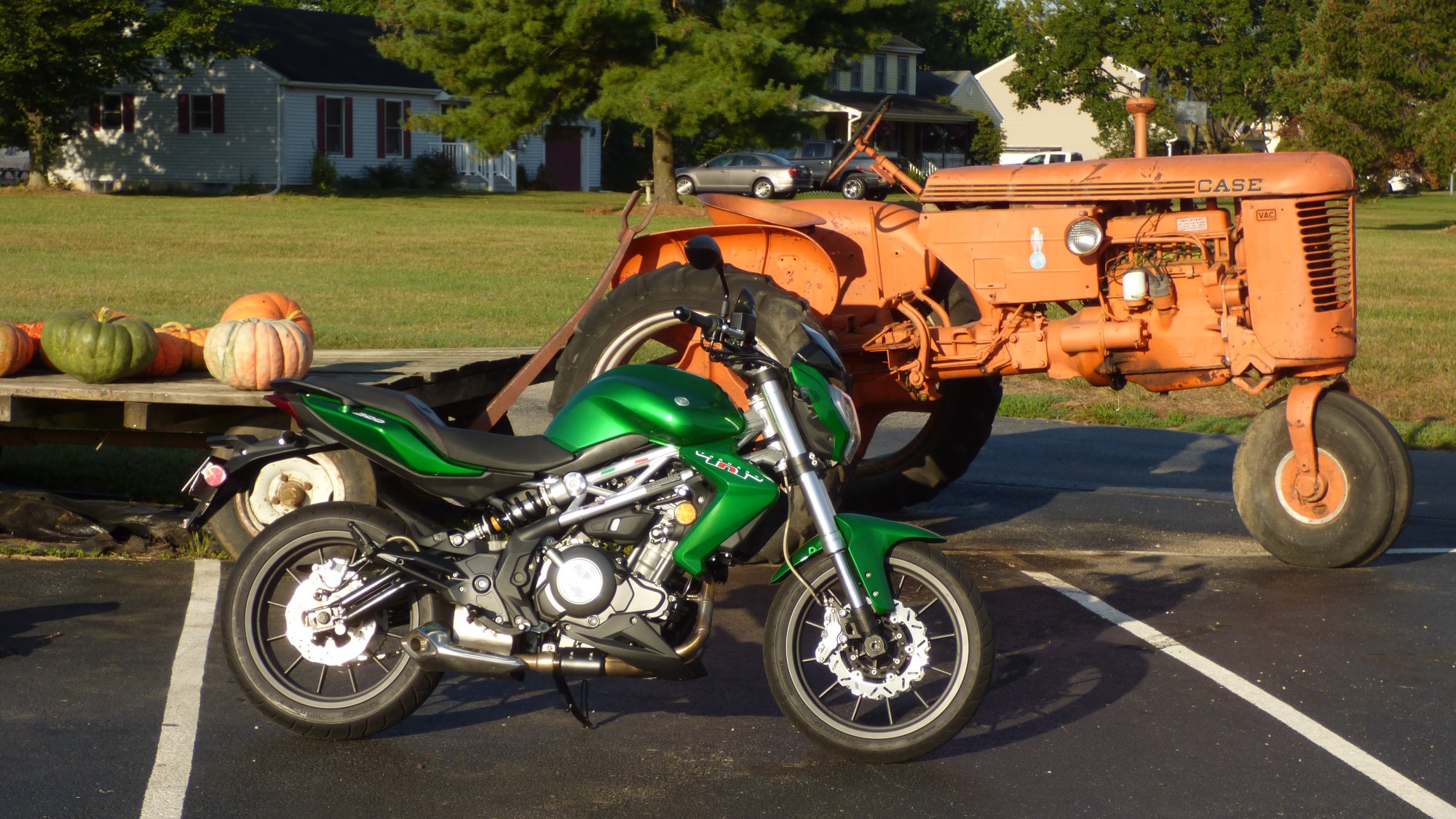
The Benelli TNT 300 looks like a real motorcycle, not one of the stylish but somewhat toy-like new models like the revived Honda Monkey.
So, which is the better choice? A new Chinese motorcycle or a used Japanese motorcycle?
There are too many factors to say there’s one clear answer for everyone. Personal preferences ultimately play a major role, and other factors, such as your comfort level with repairs and maintenance and the level of dealer support available locally, will also sway the decision. But it was a question I was considering recently as I spent a weekend riding a Benelli TNT 300.
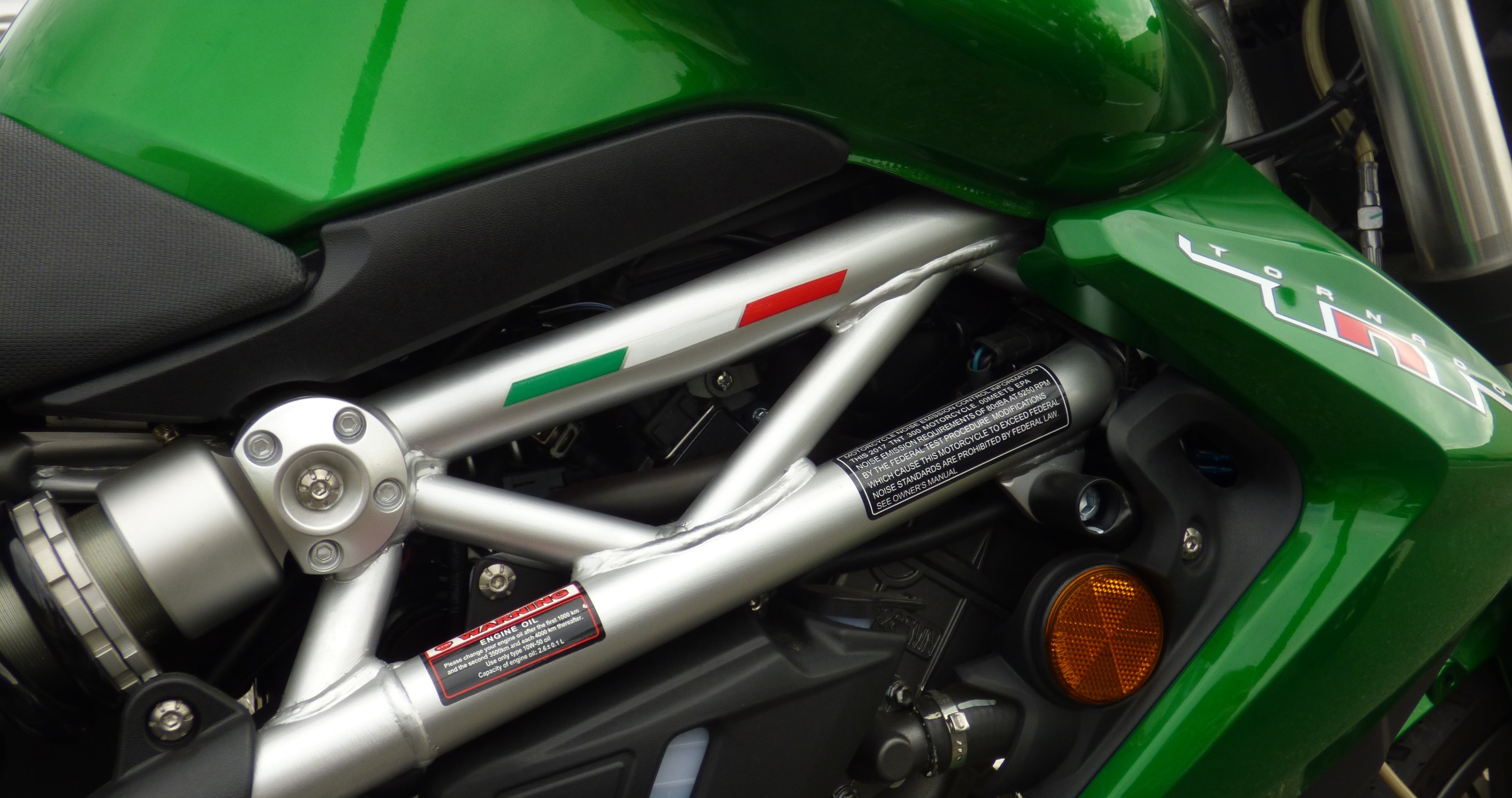
The brand name and the flag colors on the frame say Italy, but the country of manufacture is China.
The name may be Italian and the colors on the frame may be those of the Italian flag, but Benelli has been a Chinese company for some time. The brand is owned by Quinjiang Motorcycle Company, a large Chinese motorcycle manufacturer. (Quinjiang and Harley-Davidson recently announced a partnership to build new, smaller models to expand Harley’s global reach.)
There was a time after World War II when imports from Japan were seen as cheap junk. Now they set the standard for reliability and, in some cases, desirability. Chinese imports are at the beginning of that evolution. Some are cheap junk, but some are edging toward the level of quality seen in inexpensive Japanese products (some of which are now being manufactured in countries such as Thailand, to keep the price down to competitive levels). So saying something is made in China is no longer an automatic disqualification on quality standards.
The Benelli TNT 300 is the kind of motorcycle a beginner might consider for a first street bike or a more experienced rider might want as a second bike for around-town use, when riding a full-size touring motorcycle or the like just doesn’t make much sense, or simply as a down-sized, inexpensive alternative. The TNT 300 has a liquid-cooled parallel-twin engine with four valves per cylinder, offers twin disc brakes in front and a single disc in the rear, has limited adjustability in the suspension and rides on 17-inch wheels. All pretty standard stuff. The retail price is $3,999. So the beginning rider can get a new motorcycle capable of highway speeds at around the $4,000 mark.
Does that make it a good buy?

On the back roads of southern New Jersey on a late summer weekend, the Benelli felt right at home. More importantly, it held its own in Philadelphia traffic on I-95.
During my most recent trip to RevZilla HQ in Philadelphia, I also covered the next-to-last round of the MotoAmerica season at New Jersey Motorsports Park. It was a good opportunity to try the Benelli, so I rode it to the track and back on Saturday and Sunday from my base on the south side of Philadelphia. That trip is about 55 miles one way, with about five miles of I-95 and a variety of back roads through the farms and small towns of southern New Jersey. Other than that stretch of I-95, I avoided the four-lane highways, slipping into NJMP through the back door.
Most riders in the United States, used to larger motorcycles, worry first about the power on a bike like the 300. I didn’t have any problem there. On I-95, I saw an indicated 82 mph on the Benelli’s speedometer, and though I’m pretty sure that reading was considerably optimistic, I was easily keeping up with traffic and wasn’t tapped out. On the southern Jersey country roads, with speeds a little lower, the TNT felt unstressed and right at home.

The headlights on the Benelli TNT 300 are halogen units but the other lights are LEDs. It’s good to see LEDs coming stock on even low-cost motorcycles.
It’s not hard to spot areas where the quality is a notch lower than on a small-displacement Japanese motorcycle. Those who focus on fit and finish will notice details like unlovely welds on the frame and plastic covers over the gauges instead of glass. On the other hand, some details were a little nicer than I expected, like the dual-diameter handlebar. The bright green paint even drew some complimentary comments (from those who aren’t opposed to green on a motorcycle, as a surprising number of people are).
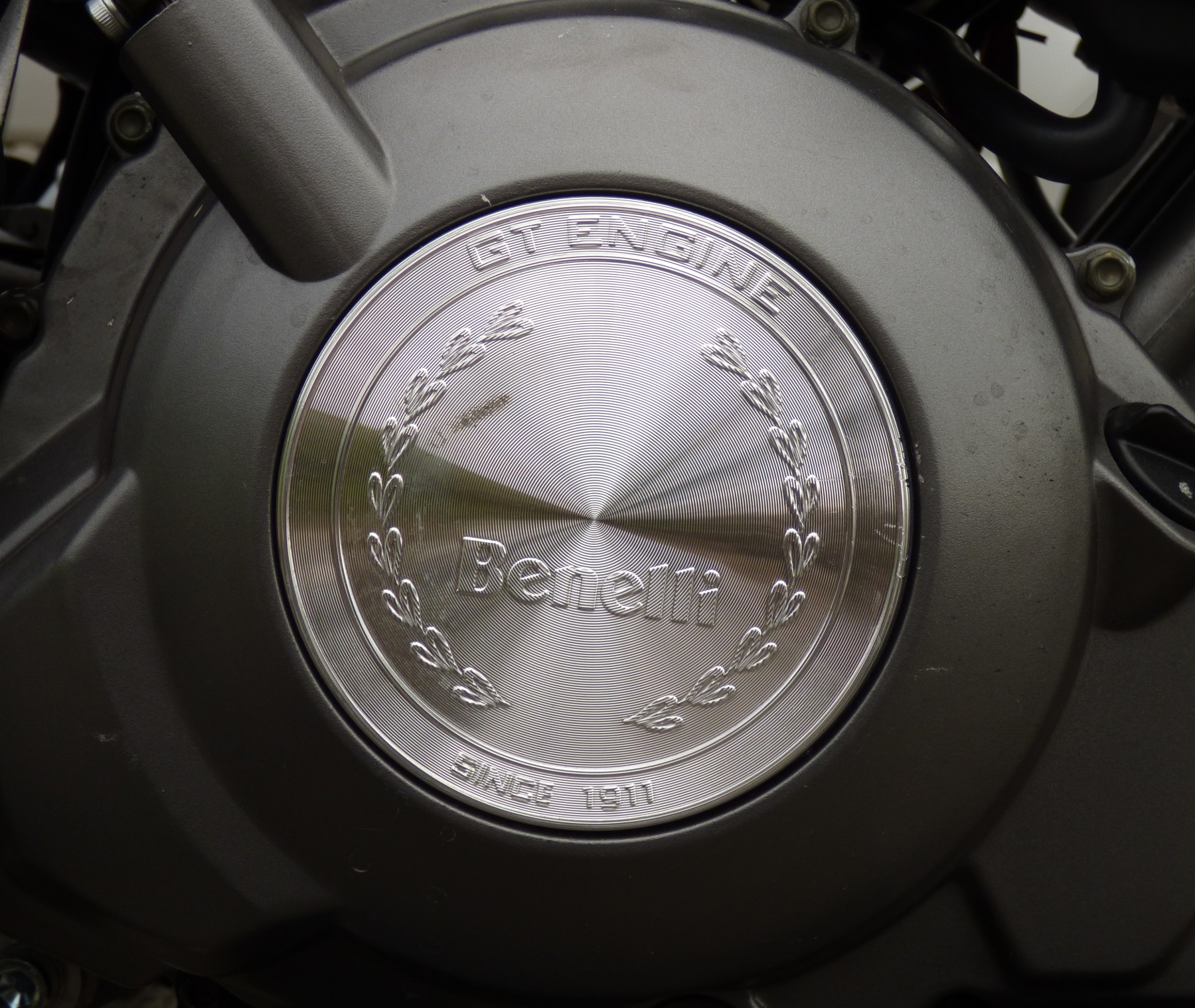
Some things get lost in translation. I’m not sure what a “GT engine” is. Benelli’s been around since 1911, but it’s been Chinese since 2005. And yes, the plate is on a bit crooked.
Those things don’t affect functionality, however. In terms of function, the brakes were nothing special but worked fine for the size and power of the motorcycle. Handling was predictable and never felt out of the ordinary. The suspension action was a bit harsh, though it improved significantly after some adjustment to the rear shock. I wish I’d had more chance to experiment with the suspension settings.
Functionally, the thing that most gave me a low-quality feel was the transmission. The bike only had 363 miles on it when I picked it up and sometimes some break-in mileage makes shifts smoother, but in this case, it seemed to get worse. I rode the bike 290 miles and at the end it seemed that it took even more effort to shift gears and finding neutral at a stop became harder and harder. This is a bike that tempts you to shift into neutral as you roll up to the red light, because it’s a lot harder after you come to a stop. Of course there are lots of times when sitting in neutral at a stoplight is a bad idea.
Functionally, though, I have to say the Benelli feels like a “real” motorcycle and looks like one, too. Almost too real, in one regard. Benelli says the TNT 300 weighs 432 pounds, which is a lot for a small motorcycle, as you see when you start comparing.
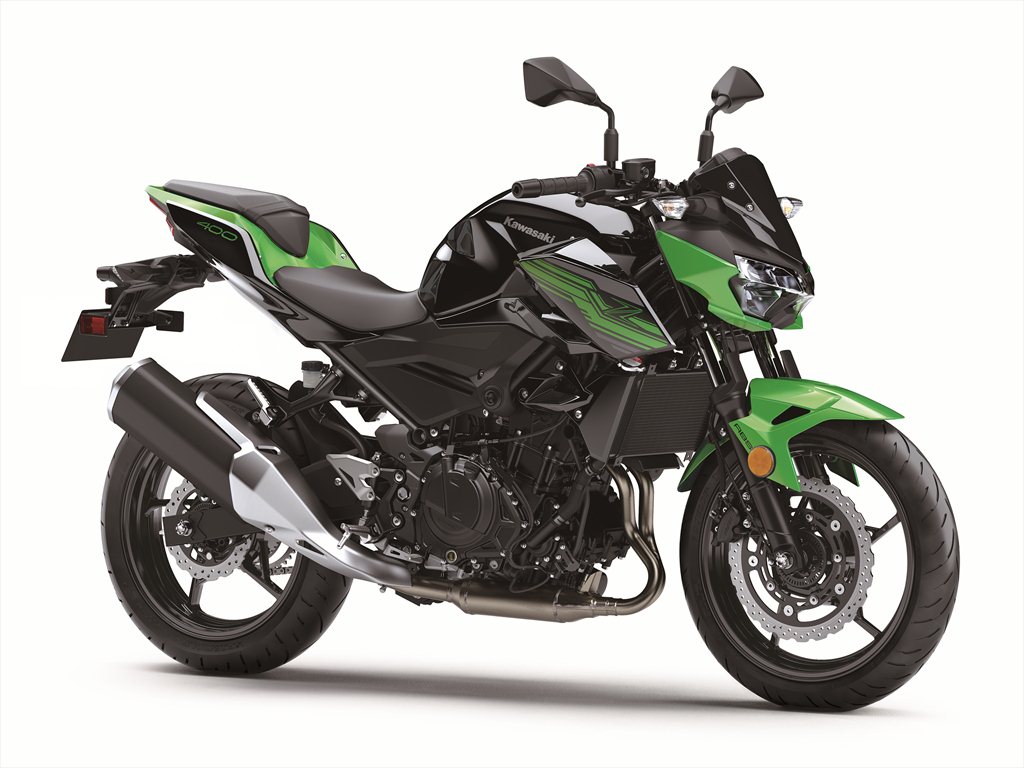
A Kawasaki Z400 offers more power and less weight than the Benelli, plus a more developed support network. Of course there’s a price difference, too.
What’s the Japanese alternative?
Instead of the Benelli, you could buy something like a Kawasaki Z400. The larger engine in the Z400 makes 28 foot-pounds of torque compared to the Benelli’s 18.4, but weighs a huge 68 pounds less. The Kawasaki makes do with non-adjustable suspension and a single disc brake up front. The price, at $4,799 is 20 percent higher than the Benelli. Since the Z400 is a new model, there are few used ones on the market, but a Cycle Trader search already shows a couple for sale with low miles that are around the price of the Benelli.
Of course some people absolutely want to buy new, whether because they are afraid of getting a used bike that has hidden problems or because they want the security of a warranty. New riders, especially, are often new mechanics, as well, and aren’t confident in their ability to spot problems with a used bike.
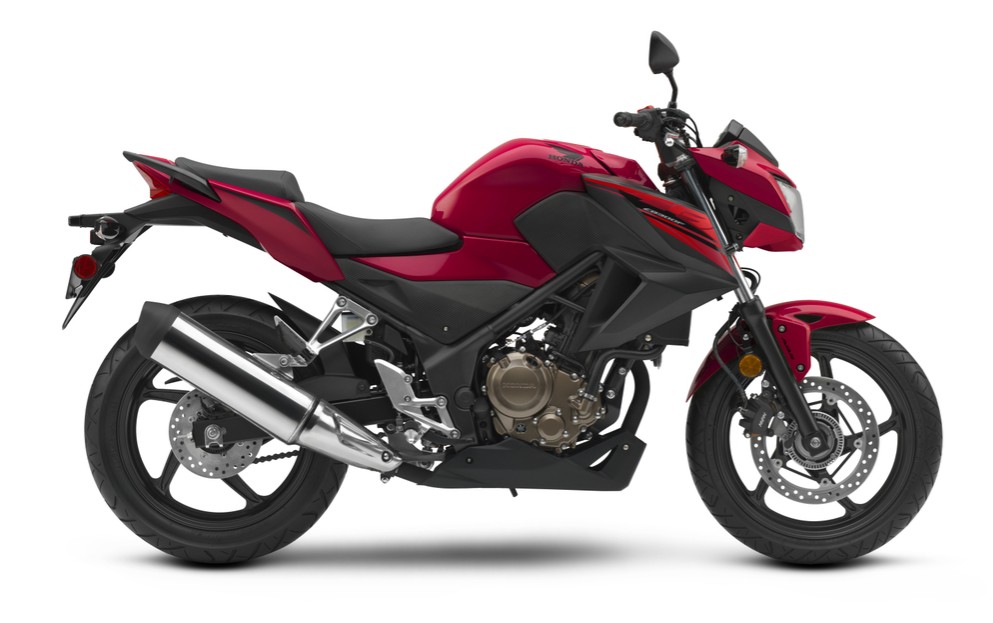
The styling of the Honda CB300F never really caught on, but it’s not all that different from the Benelli. And some bargains can be had.
In that case, you could choose something like a new leftover 2018 Honda CB300F. Compared to the Benelli, the Honda has a liquid-cooled single-cylinder engine instead of a twin, a single front disc brake instead of twin discs, and no suspension adjustment except rear shock preload. But the Honda single makes slightly more torque than the Benelli twin and it weighs a whopping 84 pounds less, which means it is more nimble, will be faster, won’t make you wish for a second brake disc and will get better gas mileage, too. The CB300F never sold well, in part because of its styling. But if you are OK with the Benelli’s style, you’ll be fine with the Honda’s, too. Honda discontinued it after the 2018 model year and replaced it with the prettier and much more expensive CB300R. A search of Cycle Trader shows that lots of Honda dealers have leftover new CB300Fs for under $3,000. That’s still less than the cheapest, leftover new 2017 TNT 300 I could find advertised, at around $3,500.
Or you could opt to go more used and get more motorcycle, like a used Honda CB500F. Now if you’re buying your first bike and you’re sensibly wanting to start small and learn right, that 500 might seem like a bit much. True, the CB500’s parallel-twin engine will make significantly more power than the Benelli’s, but in two of the most important stats for “manageability,” weight and seat height, the Honda CB500 is right there with the Benelli. The seat height is about the same and the Honda still weighs 17 pounds less. Plenty of two-year-old CB500s are for sale for the list price of a new TNT 300.
Now, let’s consider support. There’s a Honda or a Kawasaki dealer in any city of any size in the United States. Benelli has quite a few dealers signed up, but they’re still thin on the ground in most parts of the country. For example, there are three Benelli dealers listed in the entire state of Texas. If you need warranty support, you’ll need a dealer close by. Even if you plan to rely on an independent mechanic for any maintenance or repairs you can’t tackle yourself, outside of warranty work, you still have to consider that any motorcycle mechanic is going to be familiar with Honda and Kawasaki engines and parts will be available. Benelli?
Also, remember how I said I wish I’d had more opportunity to tinker with the Benelli’s suspension adjustment? Part of the problem was that the barely understandable owner’s manual provided almost no information so I was making adjustments and wasn’t even sure what I was changing. It’s another example of how the support is not up to major-manufacturer standards.
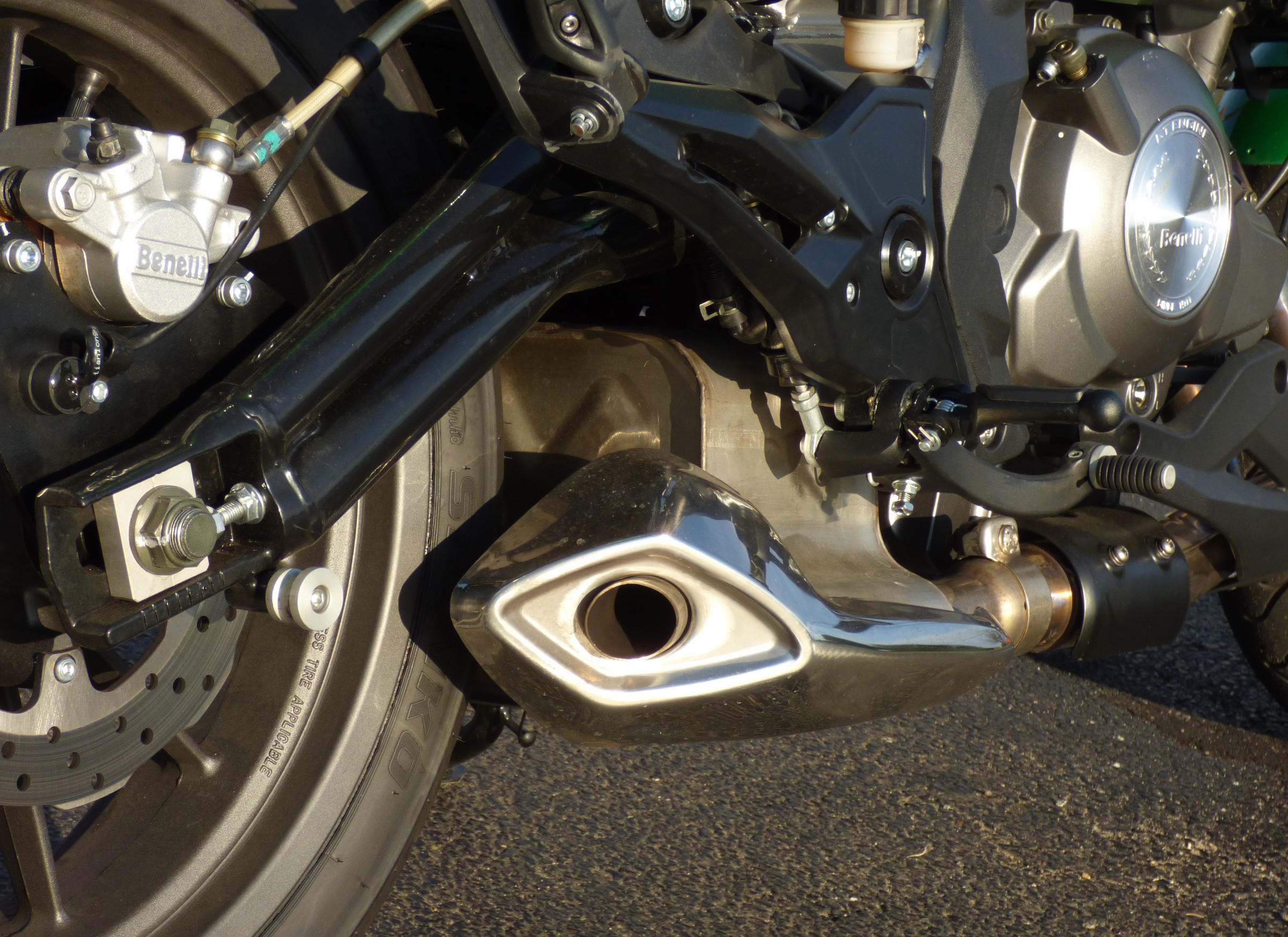
A chromed cover does only a partially successful job of hiding the big square box of an exhaust can on the Benelli TNT 300.
Bottom line, for me, is that there’s still no compelling argument to buy a new Chinese motorcycle over a used Japanese one, unless you get one of the really, really cheap ones (now I’m talking in the sub-$2,000 range) and treat it as a disposable product. Not everyone agrees. Interestingly, of my colleagues at RevZilla, a couple of them were impressed with the Benelli and considered it competitive (low expectations helped there) and another said there’s no way he’d consider it, when he could pick up a lightly used Z400 for the same price.
I’m in the latter camp. If you’re spending something like $4,000 for a small-displacement street bike, I’d look for a used Z400. And if you really want to save money and don’t mind the styling, find a dealer with a 2018 Honda CB300F and see how desperate he is to get rid of it. For a smart and informed consumer, getting into motorcycling doesn’t have to cost a lot and starting with a small motorcycle like these will help you learn riding skills, instead of wrestling with a motorcycle that’s too large and too powerful and teaches you survival skills, instead. In my opinion, that’s the best way to go.
